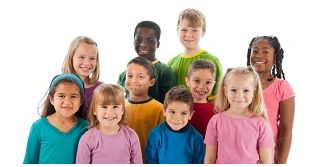Typologies of Adult and Adolescent Female Sexual Offenders
By Monica Applewhite, Ph.D.
 To date, there is no clearly defined, empirically validated typology for female sexual offenders. However, the literature on female offending is beginning to show slow progress toward defining categories of the diverse population of women and adolescent girls who sexually abuse. Preliminary research has supported the proposal of at least three types of adult female offender and three types of adolescent female offender. Each of these types is described in the sections that follow.
To date, there is no clearly defined, empirically validated typology for female sexual offenders. However, the literature on female offending is beginning to show slow progress toward defining categories of the diverse population of women and adolescent girls who sexually abuse. Preliminary research has supported the proposal of at least three types of adult female offender and three types of adolescent female offender. Each of these types is described in the sections that follow.
Expert in standards of care and the dynamics of abuse in educational and religious environments
 To date, there is no clearly defined, empirically validated typology for female sexual offenders. However, the literature on female offending is beginning to show slow progress toward defining categories of the diverse population of women and adolescent girls who sexually abuse. Preliminary research has supported the proposal of at least three types of adult female offender and three types of adolescent female offender. Each of these types is described in the sections that follow.
To date, there is no clearly defined, empirically validated typology for female sexual offenders. However, the literature on female offending is beginning to show slow progress toward defining categories of the diverse population of women and adolescent girls who sexually abuse. Preliminary research has supported the proposal of at least three types of adult female offender and three types of adolescent female offender. Each of these types is described in the sections that follow.Adult Female Offenders
Predisposed—The Predisposed offender has a long history of being sexually and physically abused as a child, being sexually victimized as an adult, and having mental health difficulties throughout her lifetime. This type of offender normally acts alone. She may abuse very young children who are likely to be her own or part of her family. She sometimes also physically abuses and she may have sexual fantasies that involve children.
Teacher/Lover—The Lover offender perceives herself as being in a peer-to-peer sexual relationship with a child or youth. She may abuse males or female who are pre-or post-adolescent children. At the time of offense, the Lover offender may be struggling with same-age connections and feeling lonely or abandoned. This type of offender has a very difficult time accepting that her behavior in any way constitutes a crime because she has no ill will toward the child or youth and did not intend harm. She romanticizes the relationship, sometimes believing the child is her “one true love” and sometimes perceiving herself as sexually “mentoring” a child or youth of either gender.
Co-offender—The Co-offender has also been called “male coerced.” This type of offender is passive and dependent on a male offender who may also be physically abusive with her. The dominant male partner pressures the woman to commit sexual offenses, often against her own children or other children in the family. It is not uncommon for women who begin sexually abusing in this way to continue abusing on their own even after the male initiator is out of her life.
Adolescent Female Offenders
Sexually curious—The Sexually Curious adolescent most often abuses in the context of babysitting. This adolescent is inexperienced, naïve, and sometimes even fearful about sexual information and activities. She has rarely experienced sexual or physical abuse and is primarily motivated by wanting to know or experience some type of sexual activity or experimentation. This type of adolescent is engaged in a very few number of incidents and there is some evidence to suggest a percentage of the offenses are never known or disclosed. This adolescent is not emotionally or psychologically disturbed, but lacks awareness that the other child is not her peer.
Sexually reactive—The Sexually Reactive adolescent has been sexually abused. Her sexual offenses are likely to recreate her own victimization. She, like other adolescents, tends to abuse alone. She may have some emotional disturbance, but it is not necessarily severe. She may have social skills and other personal strengths. Addressing her own sexual abuse issues is expected to resolve her sexual offenses.
Repetitive abusers—This adolescent offender has a significant history of chaos and family disturbance. She has been physically and sexually abused, often from a very early age. Her development has been disrupted by trauma, creating emotional disturbance, mental health problems, and instability. If her issues are not addressed, she may develop into an adult predisposed offender. As the name suggests, the Repetitive offender engages in more extensive, severe abuse on a repetitive basis and may have multiple victims.
Categories are an important method we use to grasp complicated information. The diversity of sexual offending as a whole, and female sexual offending more specifically, suggests a need for just this type of mental organization. Although preliminary, categories of female sexual offenders can offer us a broad awareness of the forms and dynamics that may occur within this complex phenomenon.
References
Davin, P., Hislop, J., & Dunbar, T. (1999). Female sexual abusers: Three views. Brandon, VT: The Safer Society Press.
Matthews, R., Hunter, J. A., & Vuz, J. (1997). Juvenile female sexual offenders: Clinical characteristics and treatment issues. Sexual Abuse: A Journal of Research and Treatment, 9, 187-199.
This article is not part of your continuing training. To access your required bulletins you must log in using the form in the upper left-hand corner of the screen. Then go to the TRAINING tab.



